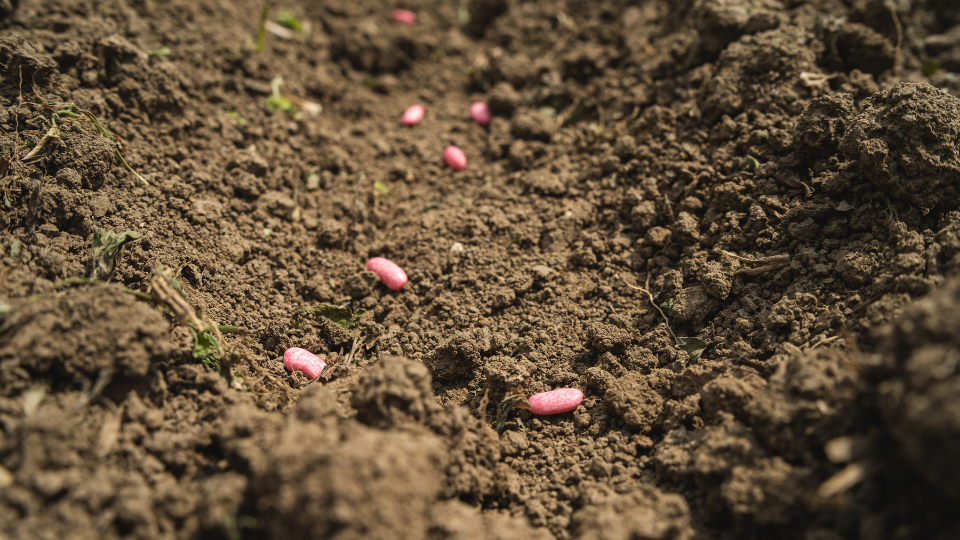Interseeding Legumes Into Existing Pasture

One of the most common questions I get at the Cache County Extension Office is “how can I improve my pasture”. Some of my common responses include: changing grass pasture species, utilizing better noxious weed strategies, increasing nitrogen fertilization, and improving grazing management. While these responses will all help improve pasture, there is another recommendation I like to give. Research has found that interseeding legumes into existing pastures can be a very beneficial practice and can help increase the sustainability of current pastures.
Why interseed legumes?
Legumes are able to take nitrogen from the air (unusable form) and convert it to a usable form available to plants in the soil. This process happens through a symbiotic relationship that plants form with rhizobium bacteria. By interseeding legumes into an existing pasture, you are increasing the amount of available nitrogen in your pasture system. This means less fertilizer has to be utilized each year, and pasture quality and yield increases. Research has also found that legumes will help pastures maintain higher quality and yield even into the heat of summer, when pasture grasses tend to start dipping in both categories.
Interseeded pastures have also been found to increase livestock weight gains when compared to solely grass pastures. Many producers may worry about bloat when adding legumes, such as alfalfa, to pasture. This is a valid concern, but luckily, a few species of legume have been discovered that are considered “non-bloat legumes”. These specific legumes produce a plant-based compound that interacts with the rumen and helps to prevent the frothy bloat that commonly occurs on pasture. Non-bloat legumes include: Sanfoin, Cicer Milkvetch, and Birdsfoot Trefoil.
How to interseed legumes?
For those of you interested in interseeding legumes the next questions is how to get legumes established. Establishing legumes into existing pastures is the hardest part of the process. When interseeding into existing pasture, grasses are the biggest enemy. Often times grasses will choke out legume seedlings, or will not even let legume seeds germinate. In order to get a successful establishment of legumes, pasture grasses have to be knocked back in some way to allow the legumes to have a competitive edge. Mowing or over-grazing for a short period before planting has helped increase the odds for a successful establishment. Researchers have also found that spraying glyphosate at a low rate (really low rate as not to kill grasses just knock them back) can help increase odds as well. Another method to increase your odds of a successful legume establishment is timing of planting. Legumes should be interseeded into existing pasture in the summer. As the heat of the summer hits, pasture grass production will decrease, allowing legumes to have an advantage over pasture grasses even if it is only for a short time. For the best success, multiple methods should be used.
When considering planting equipment, no-till drills have had the most success in interseeding legumes. The weight and ability of a no-till drill to deposit seed within existing
pasture grasses make it ideal for interseeding. Broadcast seeding can work, but other equipment should be used to agitate the soil, and seeding rate needs to be increased by 10%. The Blacksmith Fork Conservation has a no-till drill available to rent for those of you who are interested in interseeding pasture.
Should I Interseed Legumes?
Before making changes to any operation, it is important to make sure that it works for you. If you are happy with pasture production, then interseeding legumes may not be a good choice. However, adding legumes can be a great tool in improving yield and production on pasture. It is important to note that seed costs can add up quickly especially if legumes do not establish after planting. The drought we are facing right now is also an important factor to take into consideration. With the harsh conditions we have faced this year, I would not be looking to plant legumes until we have more soil moisture available, but this is an idea for the future. If pastures are in a dryland setting, some of these methods will need to be changed to ensure proper legume establishment.
If any of you are interested in interseeding legumes, have question about the process, or want more resources please reach out to me.


 Utah 4-H & Youth
Utah 4-H & Youth